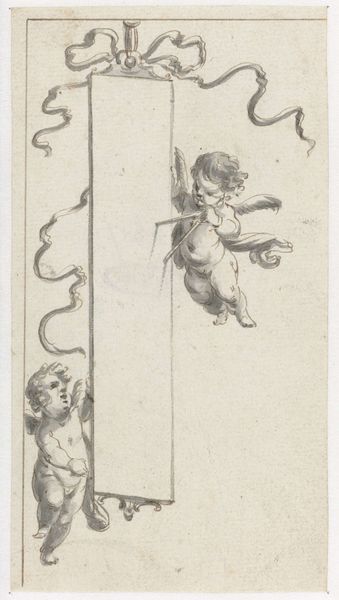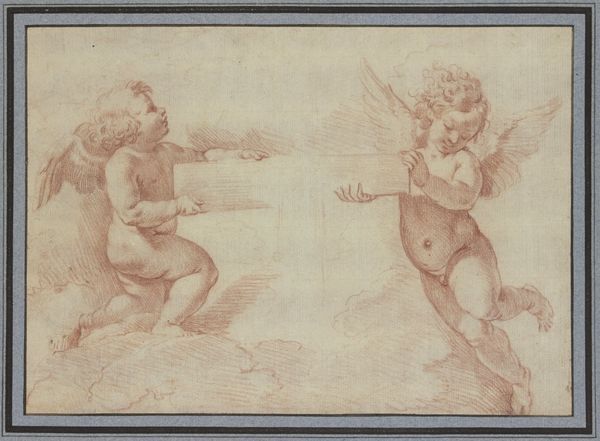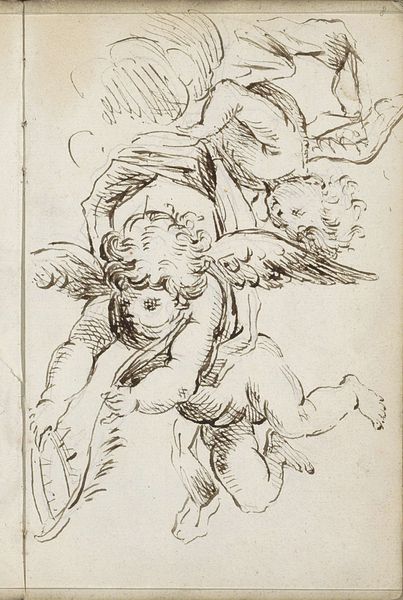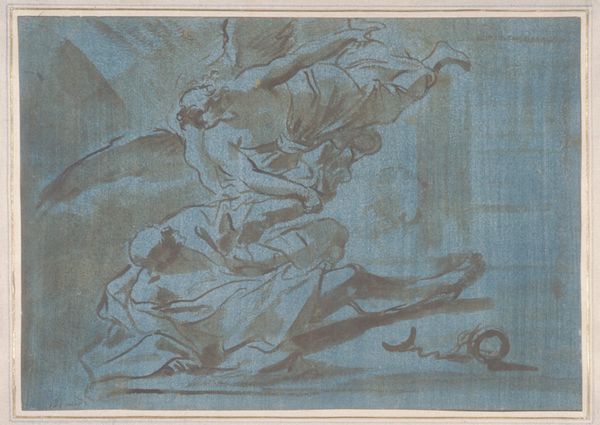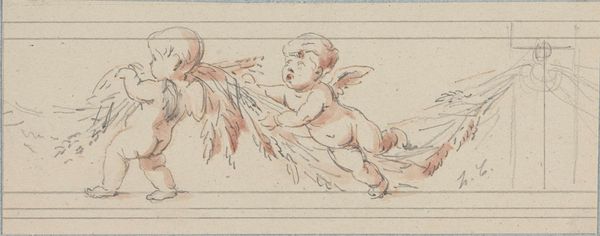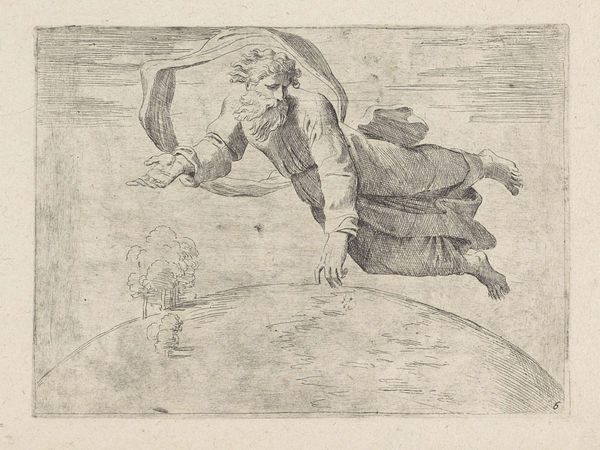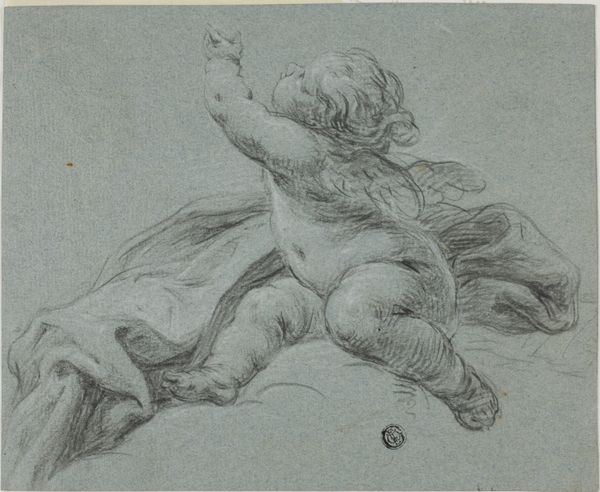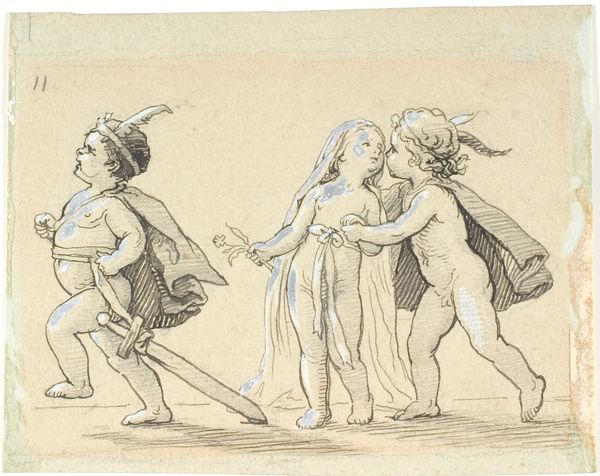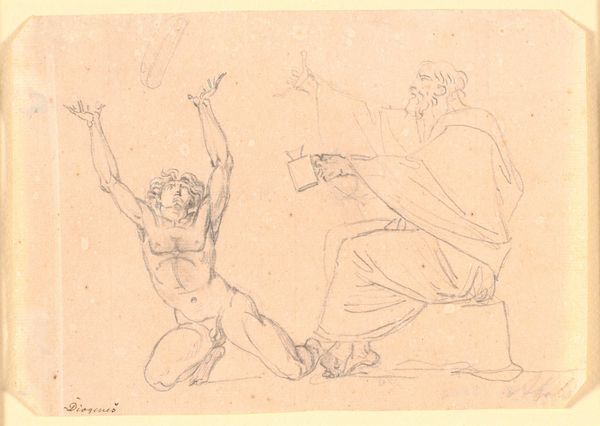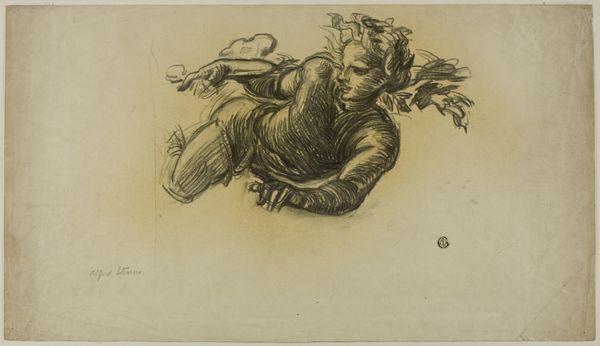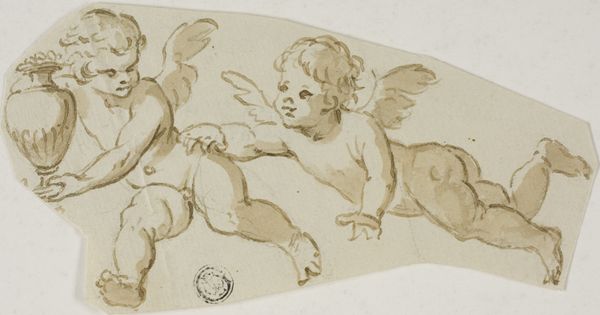
Studies of Two Flying Putti and of Drapery (recto); Seated Virgin and Child, and Kneeling Child (verso) 1609 - 1685
0:00
0:00
drawing, print, pencil
#
drawing
#
baroque
# print
#
pencil sketch
#
figuration
#
child
#
pencil
#
academic-art
Dimensions: 7-1/16 x 9-3/8 in. (18 x 23.8 cm)
Copyright: Public Domain
Curator: Let's discuss this intriguing drawing attributed to Sassoferrato, from sometime between 1609 and 1685, titled “Studies of Two Flying Putti and of Drapery (recto); Seated Virgin and Child, and Kneeling Child (verso).” Editor: The figures possess a beautiful quality despite the somewhat academic feel, like figures in an exercise rather than full of emotion. There's an innocence, perhaps even a studied, staged innocence. Curator: Right, it's important to remember the social role of art academies in the 17th century, shaping artistic careers and setting aesthetic standards. You can clearly see Sassoferrato is practicing classical conventions here, mastering idealized human forms which reflects the value system of his era and what kind of works were deemed suitable for display or worship. Editor: Exactly! These aren't just charming babies, they represent the artist honing the visual language of power and religious authority. We are so accustomed to angels, but we tend to overlook how these images have contributed in enforcing and perpetuating certain norms. Curator: Yes, and drawings like these provide a glimpse into artistic processes within those social constraints. The artist is simultaneously creating, imitating and learning, constantly negotiating the expectations of the church, the patrons, and the academies. Editor: The layered aspect fascinates me, though. He’s dealing with complex expectations – reverence, beauty, and technical skill – all while potentially subverting, at least subtly, with the dynamism implied by the flying figures as the drapery lays beneath them as if awaiting the figures to be lain on top. Curator: Well said. Ultimately, examining this work gives us insight not only into Sassoferrato's capabilities, but into how art functioned as a tool of cultural affirmation during this period. Editor: And prompts us to interrogate our contemporary biases when encountering seemingly innocuous images. Art is never created in a vacuum!
Comments
No comments
Be the first to comment and join the conversation on the ultimate creative platform.

